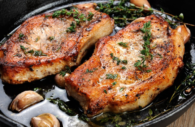
The horror of Alyan’s death – and how one photo shook the world
It is the shocking image that began to emerge yesterday afternoon on social media: a small boy in blue trousers, a red t-shirt, and pair of smart black Velcro runners.
He was seen lying face down in the sand on a beach in Bodrum, a coastal area of Turkey popular with Irish tourists.
The three-year-old toddler, later named as Aylan Kurdi, had drowned – along with a dozen others.

Fleeing the violence of their home in Syria, Aylan and his family were attempting to reach Greece across the Aegean Sea at the time of his death.
The small boat on which they were travelling would have been loaded with migrants before setting off at 2am yesterday from the coast of Turkey.
Aylan, of course, never made it. Nor did his five-year-old elder brother, Galip, or their mother, Rehan. Two people remain unaccounted for; the youngest victim is a nine-month-old baby.

The short journey amounts to just 20km, but none of the passengers were wearing life-jackets, and once tossed into the sea, the children in particular stood little chance of survival.
The only remaining member of the family, the children’s father, Abdullah, had to make a series of unspeakably grim phone-calls to relatives yesterday.
He reportedly could only say: “My wife and two boys are dead,” before breaking down in grief.

Despite the presumed hardship of their young lives – the family lived in the ISIS-besieged Syrian city of Kobane – evidently the Kurdi boys enjoyed moments of happiness too: heartbreaking photographs of the pair emerged this morning.
One shows them smiling warmly while posing for the camera; Galip with his arm around Alyan.
A second snap shows the boys laughing with a large teddy bear between them.

Today, newspapers throughout Europe are dominated by the image of Alyan’s body – many front pages show him being carried gently from the shoreline by a member of the Turkish police force.
Indeed, the photograph is being compared to other historically significant and pivotal images from the 20th century: the stark picture of a burning Phan Thi Kim Phúc taken during the Vietnamese War, as well as the photo used on the cover of TIME magazine showing Muslim prisoners peering through barbed wire during the Srebrenica Genocide.

Social media has been particularly vocal too, with hundreds of thousands of tweets being posted calling for European nations – including Ireland – to do more to alleviate the crisis.
Speaking on RTE’s Morning Ireland today, Minister Brendan Howlin admitted that as a nation we now must “step up to the plate,” to help those refugees fleeing from Syria.

“It’s a world issue,” he said. “And we need to have a world response with a real sense of solidarity.”
Calling it “one of the most challenging issues for human-kind right now,” he concluded: “Seeing the bodies of young children on the shores of Europe is so shocking – and we can’t let that lie.”

Ireland has so far committed to taking 600 refugees between now and 2017.
This year, Germany, which has been at the forefront of campaigning on behalf of displaced peoples from the Middle East, will take 800,000.









